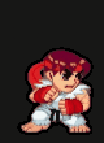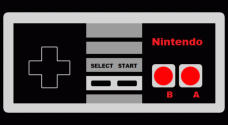Journey back to a time when Nintendo reigned supreme, passwords were the save system of choice, and one little angel faced trials that would make Hercules sweat. We're talking about Kid Icarus, the quirky, challenging, and utterly unforgettable classic that first graced the Famicom Disk System in Japan before descending upon the Nintendo Entertainment System (NES) worldwide.
More than just another platformer, Kid Icarus blended action-packed vertical and horizontal scrolling levels with light RPG elements, creating a unique experience that frustrated and captivated players in equal measure. Its distinct Greek mythology-inspired world, memorable music, and notorious difficulty etched it into the memories of a generation of gamers.
A Heavenly Quest: The Story of Pit
Angel Land was a place of peace, ruled by the Goddess of Light, Palutena. But darkness fell when the cruel Goddess of Darkness, Medusa, rebelled. Medusa's hatred for humanity turned people to stone, and she eventually stole the three sacred treasures (the Mirror Shield, Light Arrows, and Wings of Pegasus), imprisoned Palutena, and petrified her army.
With her last ounce of power, Palutena sent a bow and arrow to a young angel named Pit, who was imprisoned in the Underworld. Our hero, Pit, escapes his prison and embarks on a perilous quest through the Underworld, Overworld, and Skyworld to retrieve the sacred treasures from Medusa's fortress gatekeepers, defeat the Gorgon herself, and restore peace to Angel Land. It's a classic tale of good versus evil, albeit one filled with flying eggplant wizards and walking noses.
Angel Land's Trials: Gameplay Breakdown
What made Kid Icarus stand out – and often, stand in the way of progress – was its mix of mechanics. Pit primarily uses his bow and arrow, which has unlimited ammo but can be upgraded with items like the Guard Crystal or Flaming Arrows, often based on his health level. Hearts dropped by defeated monsters serve as currency to buy items in shops and black markets, like the crucial Water of Life for health or the Angel's Feather to save you from a fall.
The game world is divided into three main realms:
- Underworld: Mostly vertical scrolling upwards.
- Overworld: Traditional side-scrolling.
- Skyworld: Again, vertical scrolling upwards.
Each realm has three area levels leading to a large, non-scrolling fortress level. Getting through the area levels requires mastering Pit's somewhat floaty jump and dealing with relentless enemies. Falling from the bottom of the screen in vertical levels often means instant death, a mechanic that led to many a thrown controller back in the day!
Adding to the RPG feel, Pit's score acts as experience points, increasing his health bar at the end of levels. You could also find "God's Chambers" where Zeus would "train" Pit, potentially granting weapon upgrades based on your performance. Treasure chambers offered items, while enemy nests provided opportunities to farm hearts (at great risk!).
Navigating the Labyrinth: Fortresses and Bosses
The fortress levels were a major departure from the scrolling areas. These were maze-like, non-scrolling labyrinths where the goal was to find the boss gatekeeper. Items like a Check Sheet (map), Pencil (reveal map), and Torch (light dark rooms) were vital for navigation. You could also find petrified Centurion soldiers who, if freed with a hammer, would join you for the boss fight.
Defeating the gatekeepers yielded one of the three sacred treasures. These boss fights varied in difficulty, from the relatively straightforward Twinbellows to the tricky, invisible Pandora. Once all three treasures were collected, Pit could access the final stage, which surprisingly shifted genres into a side-scrolling shooter as Pit flew towards Medusa's lair.
From FDS to NES: Development and Release
Kid Icarus was initially developed by Nintendo R&D1 (the Metroid team!) for the Famicom Disk System in Japan, utilizing the FDS's larger storage and save feature. When it came to the NES cartridge release in North America and Europe in 1987, the save feature was replaced by a notoriously long and complex password system – a true relic of the era!
The game saw several re-releases over the years, including on the Game Boy Advance, Wii Virtual Console, Wii U Virtual Console, the NES Classic Edition, and Nintendo Switch Online. A notable remake, 3D Classics: Kid Icarus, was released for the Nintendo 3DS, adding stereoscopic 3D, updated graphics, and thankfully, a modern save system.
A Mixed Legacy: Reception and Impact
Kid Icarus has always been a bit divisive. While it developed a significant cult following and appeared on numerous "best games" lists (including IGN's Top 100 NES Games), contemporary reviews were often mixed. Critics praised its unique blend of genres, music, and enemy designs but frequently pointed out its brutal difficulty, sometimes frustrating controls, and dated graphics compared to contemporaries.
Despite the challenges, the game's charm, unique mechanics, and place in Nintendo history have cemented its status as a beloved retro classic for many. Surviving Angel Land felt like a genuine accomplishment.
Pit's Return: Sequels and Other Appearances
For decades, Kid Icarus remained largely dormant after its Game Boy sequel, Kid Icarus: Of Myths and Monsters, released in the early 90s. Fans clamored for a return, and finally, in 2012, Pit soared again in Kid Icarus: Uprising for the Nintendo 3DS. This highly-rated title, directed by Masahiro Sakurai (of Super Smash Bros. fame), reinvented the series as a third-person shooter with extensive dialogue and lore.
Pit, often referred to by the series name, also became a recurring character in the Captain N: The Game Master animated series and is a prominent fighter in the Super Smash Bros. series, introducing him to a new generation of gamers. He even made a blink-and-you'll-miss-it cameo in The Super Mario Bros. Movie.
Why We Still Love It
The original Kid Icarus is a game that demands patience and perseverance. Its difficulty curve is steep, its password system is archaic, and those instant-death pits are unforgiving. Yet, for those who stuck with it, mastering Pit's movement, learning enemy patterns, and finally defeating Medusa was incredibly rewarding.
It represents a unique moment in Nintendo's history, an ambitious blend of ideas that didn't always land perfectly but resulted in something truly original. Playing it today, whether on original hardware, emulation (like through Archive.org or GOG releases if available), or a modern collection, is a trip back in time to a challenging but memorable adventure. It's a testament to the era's creativity and the sheer grit of retro gamers.
FAQ
Q: Is Kid Icarus a difficult game?
A: Yes, the original Kid Icarus is widely considered a very difficult game, especially in the early levels and due to mechanics like instant-death falls.
Q: What genre is Kid Icarus? A: It's primarily a platformer but incorporates significant RPG elements like health upgrades based on score, item shops, and inventory management. The final stage even becomes a scrolling shooter.
Q: Where can I play the original Kid Icarus today?
A: Besides the original NES cartridge, it's available on Nintendo Switch Online (NES library), the NES Classic Edition, and the 3DS remake 3D Classics: Kid Icarus. Emulation is also an option for PC players.
Q: Does Kid Icarus have any sequels?
A: Yes, it has a Game Boy sequel (Of Myths and Monsters) and a major 3DS sequel (Kid Icarus: Uprising). Pit is also a regular in the Super Smash Bros. series.


